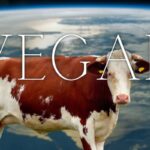The lush tropical rainforests, Earth’s biological treasures, are vanishing at an alarming rate. Alongside this devastating loss, the production of vanilla and cocoa, crops that thrive in these rainforests, is on the decline. Small-scale producers are abandoning these aromatic treasures, instead resorting to slash-and-burn subsistence farming in a desperate bid to feed themselves and their families.
Vanilla cultivation outside the rainforest has proven unsustainable. Mexico, once the leading producer of natural vanilla, boasting an annual output of 500 tons of cured beans, saw its vanilla production plummet to a mere 10 tons in 2006. The cultivation of vanilla has now become the domain of women, children, and the elderly, taking place in the few remaining patches of tropical rainforest within the country.
As deforestation continues unabated, the planet faces increasingly severe weather events, including tropical cyclones and hurricanes. In 2002, Madagascar, a major vanilla-producing nation, suffered two devastating tropical typhoons that wiped out nearly half of the world’s vanilla production, causing vanilla prices to skyrocket. This price volatility has driven food processors to increasingly turn to artificial vanillin. Shockingly, it’s estimated that approximately 95% of “vanilla” products on the market today actually contain artificial vanillin. This synthetic flavor compound is synthesized from lignin, a by-product of paper manufacturing that used to be indiscriminately dumped into rivers. In a curious twist, a Japanese scientist even managed to synthesize vanillin from cow manure, offering an entirely new perspective on “organic vanilla.”
A Conservation Solution: Vanilla and Cocoa in Harmony

Amid this ecological crisis, the Rainforest Vanilla Conservation Association has devised a visionary solution—the Vanilla-Cocoa Production System ©, designed specifically for the tropical rainforest. This innovative system involves planting vanilla vines alongside cocoa trees, all shaded by native tree species. In doing so, small-scale farmers receive direct economic incentives for preserving the tropical rainforest while cultivating these valuable crops.
Carbon Sequestration and Combatting Global Warming
Carbon dioxide, the primary greenhouse gas responsible for global warming, is a pressing concern for our planet. A single-acre vanilla-cocoa plantation is estimated to annually sequester the equivalent of carbon dioxide emissions from burning 2,550 gallons of gasoline. In simpler terms, savoring a gallon of real vanilla or chocolate ice cream contributes to removing from the atmosphere the equivalent carbon dioxide emissions produced by burning approximately one gallon of gasoline.
Join the Cause: Save Our Planet with Vanilla and Cocoa
You can play a vital role in saving our planet by choosing products featuring real vanilla and cocoa. Look for the Rainforest Vanilla TM hummingbird and vanilla flower logo on products, which signifies that the vanilla is sourced from farmers dedicated to conserving the tropical rainforest. Contributions made to the Rainforest Vanilla Conservation Association are utilized to assist farmers worldwide in planting vanilla and cocoa and to provide carbon sequestration payments, further incentivizing the preservation of the irreplaceable rainforest. To learn more about how you can contribute to saving the tropical rainforest, visit www.vanillaexchange.com and be part of the solution.


